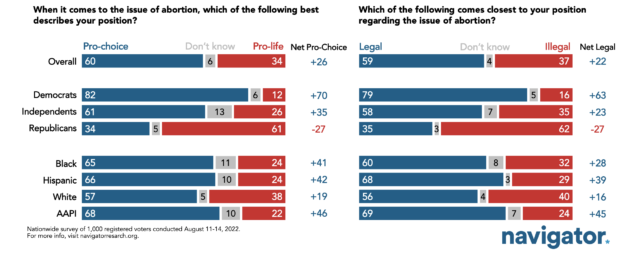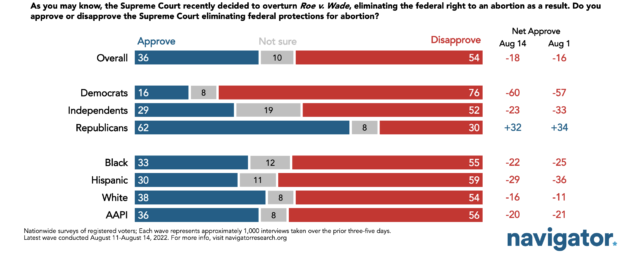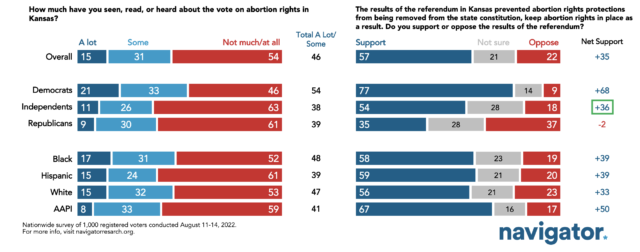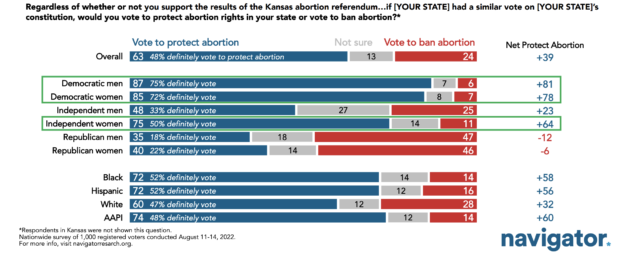Three in Five Americans and Independents are Pro-Choice Following the Recent Referendum in Kansas

Download Full ReportDownload Poll Toplines
- Majorities of Americans identify as pro-choice and support abortion being legal in all or most cases.
- Almost half of Americans are hearing about the Kansas vote on abortion, and three in five say they support the results to keep abortion rights in the Kansas state constitution.
- Majorities say they would vote to protect abortion rights if their state had a referendum similar to Kansas’, including overwhelming majorities of Democrats and independent women.
Three in Five Are Pro-Choice and Say Abortion Should Be Legal in All or Most Cases
Majorities of Democrats (82%) and independents (61%) describe themselves as pro-choice.
More than Half of Americans Continue to Disapprove of the Supreme Court Eliminating Federal Protections for Abortion
Republicans remain the only group supportive of the Supreme Court’s decision to overturn Roe v. Wade – other partisan, racial, and ethnic groups disapprove of the decision by double-digit margins.
Nearly Half Have Heard About the Kansas Vote on Abortion, and a Majority Support the Outcome Protecting Abortion Rights
The results of the Kansas referendum on abortion rights – to keep abortion protections in place in the state constitution – are widely supported, with independents supporting the decision to keep abortion rights in place in the state by 36 points.
Nearly Two in Three Americans Say They Would Vote to Protect Abortion Rights on a Referendum Like Kansas’s
Overwhelming majorities of Democrats (including 87% of Democratic men and 85% of Democratic women) and independent women (75%) would vote to protect abortion. Republican women are split (40% would vote to protect, 46% would vote to ban).



